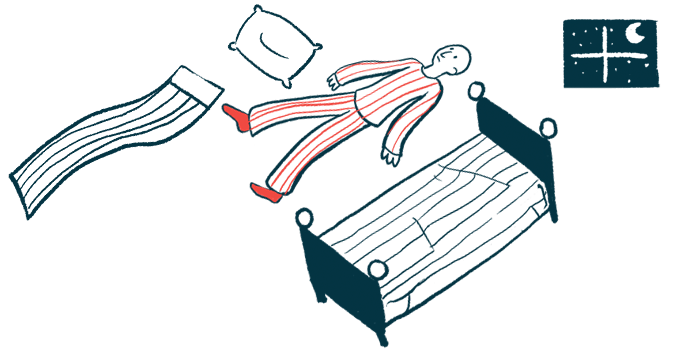Anxiety, repetitive behaviors predict sleep problems in Angelman
Researchers use global registry data to ID predictors of sleep disturbances

Anxiety and repetitive behaviors are significant predictors of sleep problems among children and adolescents with Angelman syndrome, according to a new study using global registry data.
Language and communication difficulties and challenging behaviors also were linked to sleep problems in these patients.
“Future research needs to replicate this research and to advance clinical treatment of sleep disturbances associated with Angelman syndrome,” the researchers wrote, noting also that “sleep disorders are significantly more frequent in people with [Angelman] … in comparison to typically developing age-matched individuals.”
The study, “Factors associated with sleep disturbances in children and adolescents with Angelman Syndrome,” was published in the journal Sleep Medicine.
No links found between sleep problems and gastrointestinal issues
Sleep disorders are common among people with Angelman syndrome, a genetic condition characterized by physical and intellectual disabilities, as well as behavioral problems. Angelman patients tend to need less sleep relative to those without the neurological disorder, but have problems falling and staying asleep.
To further investigate sleep disturbances among pediatric Angelman patients, a team led by researchers based at the National University of Ireland examined data from 110 Angelman children and adolescents enrolled in the Global Angelman Registry. The mean age of the children was 8.16 years, and slightly more than half (52.7%) were female.
Sleep disturbances were assessed using the Sleep Disturbance Scale for Children (SDSC), which comprised 26 questions and was completed by parents and caregivers. The questions focused on common sleep disturbances, including falling and staying asleep, breathing disorders, arousal, excessive sleepiness, and night sweats. A total SDSC score of 40 or more, a sign of sleep problems, was found in 94 patients (85.5%).
The data showed no significant association between those with and without sleep disorders regarding age at diagnosis, sex, and genetic tests. Gastrointestinal problems, such as acid reflux, constipation, vomiting with feeds, and gagging, also were not related to such disturbances.
A significant association was found, however, between sleep disturbances and a patient’s ability to use spoken words. In particular, sleep problems occurred in more patients who used spoken words than among those who could not speak (92.5% vs. 78.4%). The use of computerized devices also was associated with sleep impairments, with sleep disturbances being more common among those who did not use this form of support than among patients who did use them (92.2% vs. 78%).
Still, no links were found between sleep problems and other forms of communication, such as babbles, moans, single words, intentional sounds, short or longer phrases, or speech as expressive language. Similar results were found for the use of gestures, signing, visual pictures, and picture-to-voice systems.
The study highlighted that language and communication difficulties and challenging [behaviors], that are common in [Angelman patients], are associated with sleep disturbances. … Further research is warranted … to identify the underlying causes of sleep disturbances within this cohort.
Angelman patients with sleep disturbances exhibited significantly more challenging behaviors than did their counterparts without such issues. Anxiety, in particular, was significantly associated with sleep problems. In contrast, other behaviors, including self-injury or hyperactivity, were not connected with sleep problems, nor were seizures.
An adjusted statistical analysis revealed that anxiety and repetitive behaviors were significant predictors of sleep disturbances. Age and the ability to use spoken words or computerized communication devices did not predict these problems.
“This study advances the small amount of previous research that has been conducted on co-occurring conditions and sleep disturbances in children and adolescents with [Angelman],” the researchers wrote, noting that “it [was] found that anxiety is a predictor of sleep disturbances.”
According to the team, “the study highlighted that language and communication difficulties and challenging [behaviors], that are common in this cohort, are associated with sleep disturbances. … Further research is warranted … to identify the underlying causes of sleep disturbances within this cohort.”






